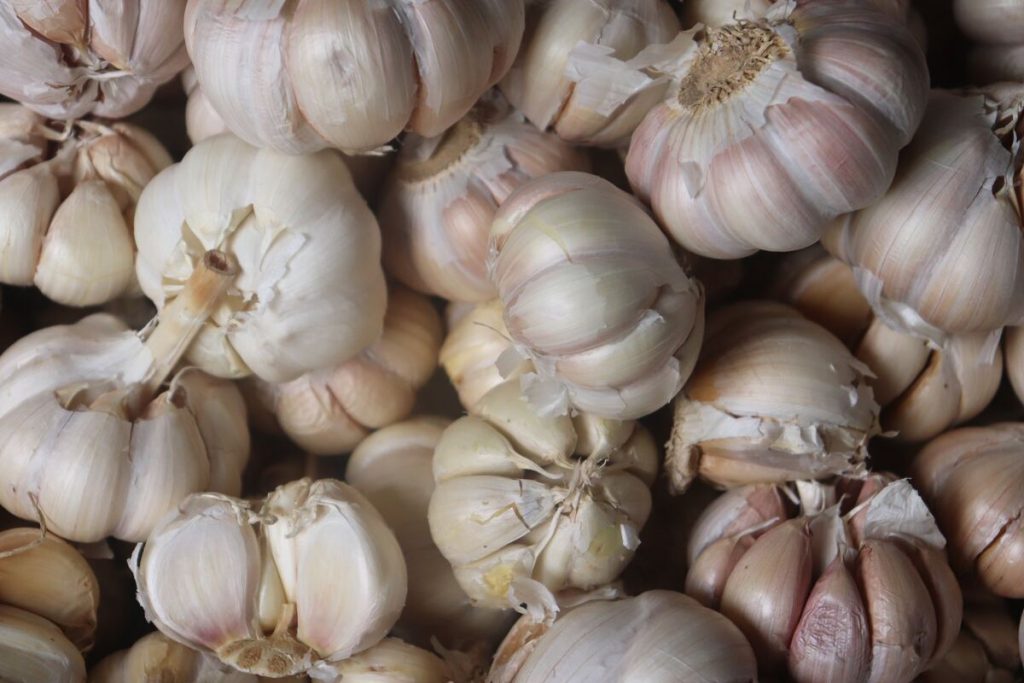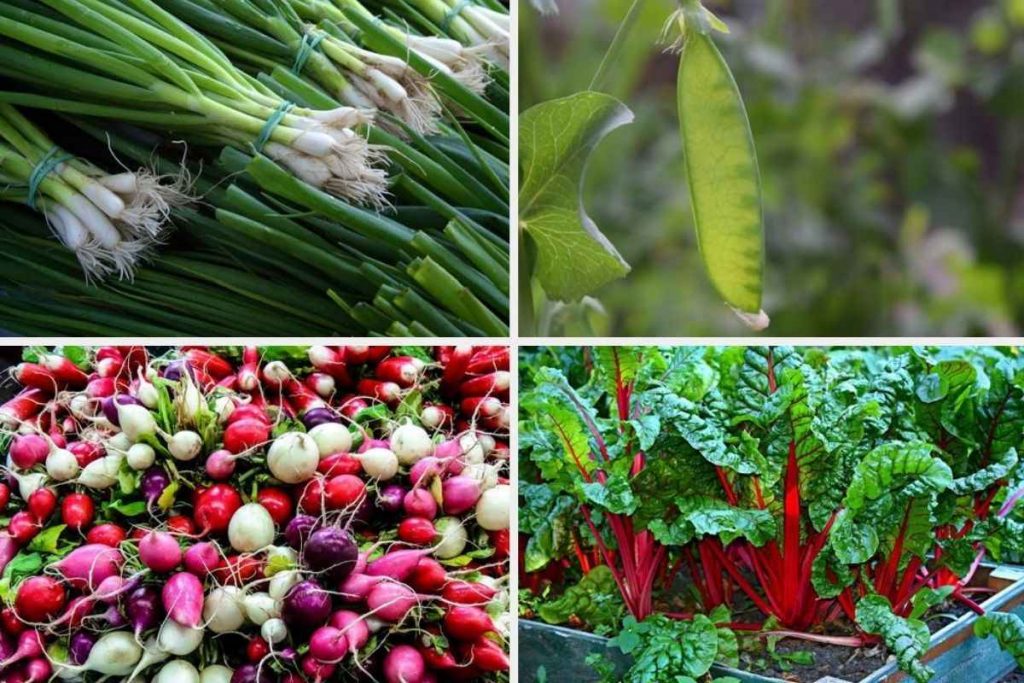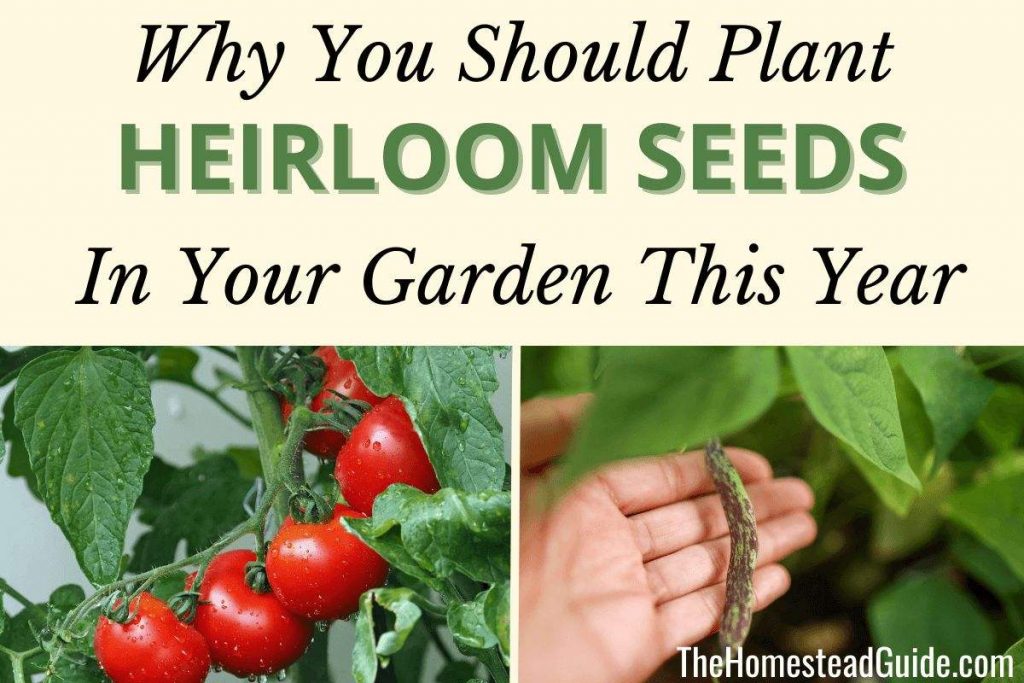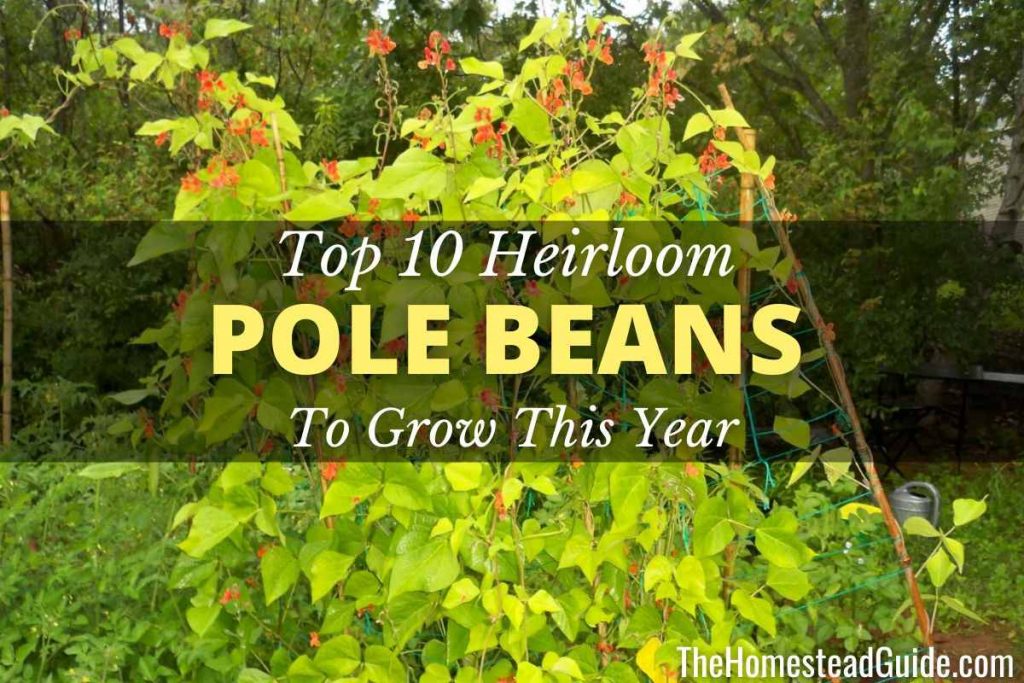Who doesn’t love cooking with fresh garlic? While garlic powder can do in a pinch, nothing beats that bright, sharp flavor of fresh minced garlic. Slap a big pile of it onto my garlic bread, please! As they say, “don’t ever let a recipe tell you how much garlic to put in. You measure that with your heart.”
And did you know that, with a little bit of effort in advance, you can grow your own garlic in your garden? You can basically neglect it the entire time and it will still thrive. And homegrown garlic is even better than fresh, organic garlic from the grocery store! Depending on the variety, it can be much stronger (if you’re into that – I am) and it’s so satisfyingly crispy when you chop it. It’s actually juicy! It’s absolutely delicious when pickled, too.
In this post, I’ll go over how and when to plant garlic in the fall and go over some commonly asked questions about growing garlic in your garden. It really is quite easy!
- How to Grow Garlic – When to Plant Garlic in the Fall
- How deep do you plant garlic in the fall?
- Should I soak my garlic before planting?
- Should garlic be watered after planting in the fall?
- When do you harvest garlic?
- How do you store garlic?
- Can you grow garlic from the grocery store?
- Final Thoughts on Planting Garlic in the Fall
How to Grow Garlic – When to Plant Garlic in the Fall
First of all, let’s get an understanding of why we plant garlic in the fall before we talk about when to plant garlic in the fall.
The key to a great garlic harvest is getting the garlic cloves to develop as much root growth as possible before the winter, but not enough to start growing green shoots out of the soil. As you can see, it’s all about timing: plant your garlic too early and it might start popping out of the soil before the winter and die off when the freezing temperatures arrive, or plant your garlic too late and the soil might freeze before there is time to grow enough roots. Either scenario can result in smaller, stunted bulbs next year. When you have to wait 8-9 MONTHS from start to finish, you don’t want to risk anything!
When to plant garlic in the fall depends on your growing season. Depending on where you live, this could mean anywhere from mid-September to late November. Remember that the soil still takes some time to freeze after temperatures have gone below freezing.
Wondering if you can plant garlic after the first frost? Yes, you definitely can. Garlic is extremely cold hardy and will grow roots as long as the ground is not frozen. Aim to plant your garlic around 1-3 weeks after the first killing frost. For many people, planting garlic around Halloween is a good time to aim for.
Choose the largest garlic cloves (they will produce the largest bulbs) and gently separate them from the bulb, leaving the paper skin on. Plant them with the flat side down and pointy side up.
How deep do you plant garlic in the fall?
Garlic is typically planted anywhere from 1-4” deep and spaced 6-8” apart in rows. Space rows 10-12” apart from one another. Larger varieties like elephant garlic need more space to grow, around 8-10” between cloves.
There are two main factors when considering how deep to plant garlic: winter protection and type of soil.
When it comes to winter protection, consider how cold it gets in your area. The deeper you plant your garlic, the more it is protected. However, you don’t want to plant it too deep and cause the plant to use too much energy to come up in the spring, as it could cause smaller bulbs overall. Aim for 1-2” deep in mild regions and 2-4” deep in cold regions.
The type of soil you have is also an important factor. If you have sandy, well-draining soil, you can plant on the deeper side of your depth range, but again, you don’t want to plant too deep or you might have smaller bulbs next year. If you have a lot of clay in your soil and/or live in a wet area, plant on the shallower side of your depth range so that the bulbs don’t rot, but still deep enough for winter protection. You may choose to add some mulch or cover to help with winter protection as well.
With these two factors in mind, you should be able to get an idea of how deep to plant your garlic in the fall.
Should I soak my garlic before planting?
While it is not essential to soak your garlic before planting, many organic gardeners swear by it as a way to protect the garlic from diseases and pests. Check out this page here for a great resource on soaking garlic cloves using various substances such as baking soda and peroxide. I personally have not tried soaking my garlic cloves before I plant them, but I have not had any issues with fungus or pests (cross my fingers!). If you want to give your garlic that extra layer of protection and boost of energy, I say go for it!
Should garlic be watered after planting in the fall?
Generally speaking, garlic does not need to be watered in the fall after planting and only needs to have consistently moist soil during the growing season in the spring and summer. It is better to under-water rather than overwater. Garlic doesn’t like wet feet!
When do you harvest garlic?
As soon as the ground starts to thaw in the spring, you’ll start to see your garlic popping up. They are one of the first things that start to come up in the spring and I always get so excited when I see them coming out of the ground – it’s a sign that gardening season is just around the corner!
(Psst… have you decided on your heirloom peas to plant in the springtime?)
While your garlic is growing, water if it is dry, but don’t overwater.
Eventually, you’ll see these long, elegant garlic scapes start to form. These are the flower stalks of the garlic plant. They start off beautifully curled and eventually straighten out and open up. You can actually eat these when they are tender – they are delicious BBQ-d or sautéed in butter!
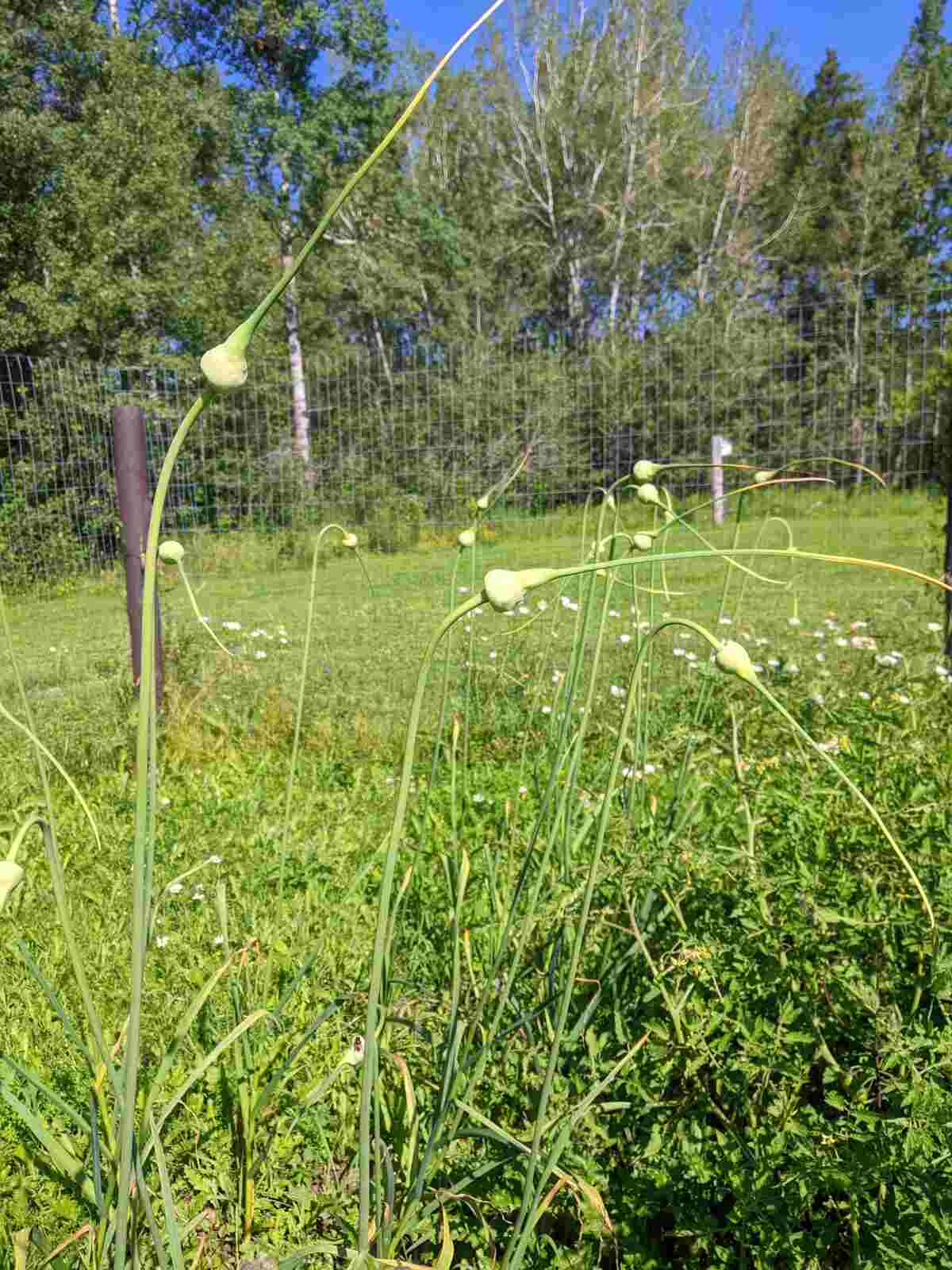
In mid to late summer, you’ll see these scapes straighten out if you left them on, and the bottom leaves of the plant will start to turn brown and wither.
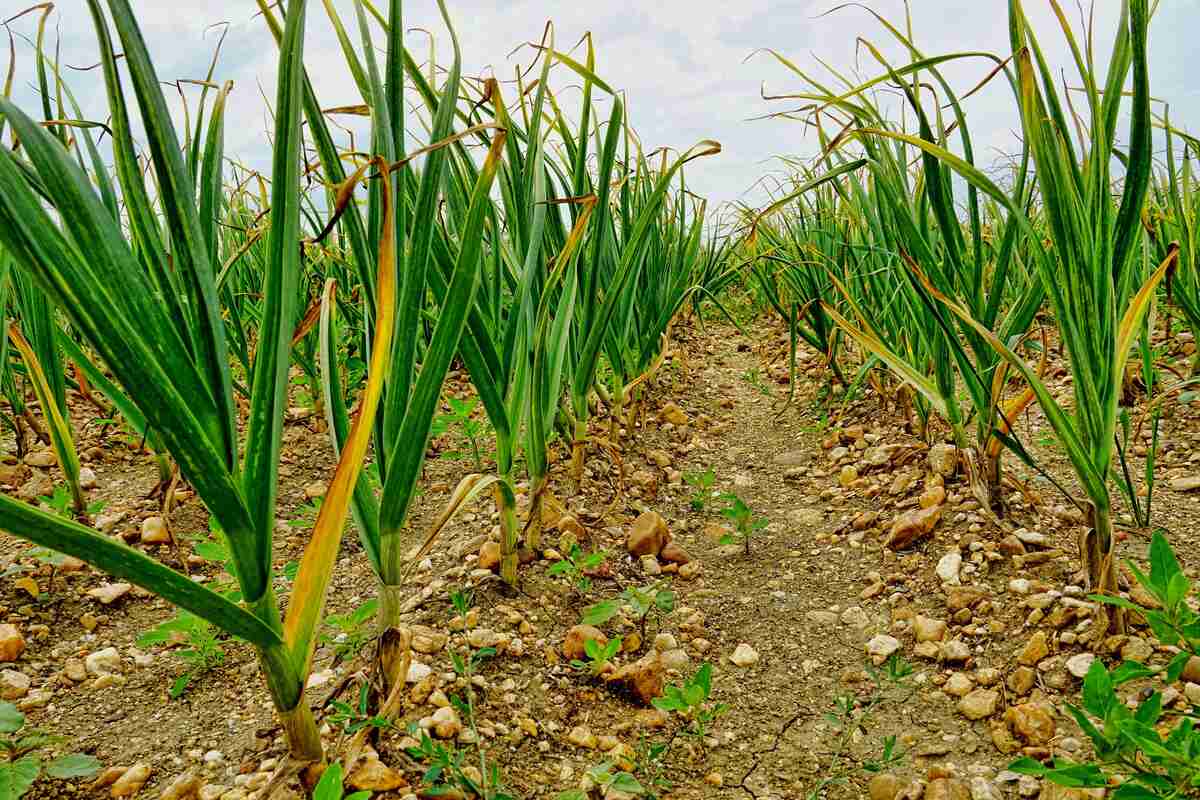
Once this happens, stop watering the garlic.
Once most of the plant has clearly started turning brown and drying up, it is time to harvest. Dig around the plant, giving it a lot of extra space just in case the clove turned sideways after you packed the soil in, and gently loosen the soil around the bulb. If it has developed its papery skin (remember that the skin won’t be as dry and flaky as it will be after it’s cured inside), then it is ready to harvest. If the bulbs still look small and haven’t developed the skin, leave them for another few weeks.
How do you store garlic?
Brush off as much dirt as you can (but don’t wash it off) and store in a warm and dry place to cure. Essentially, we want to dry out the papery skin for longer storage.
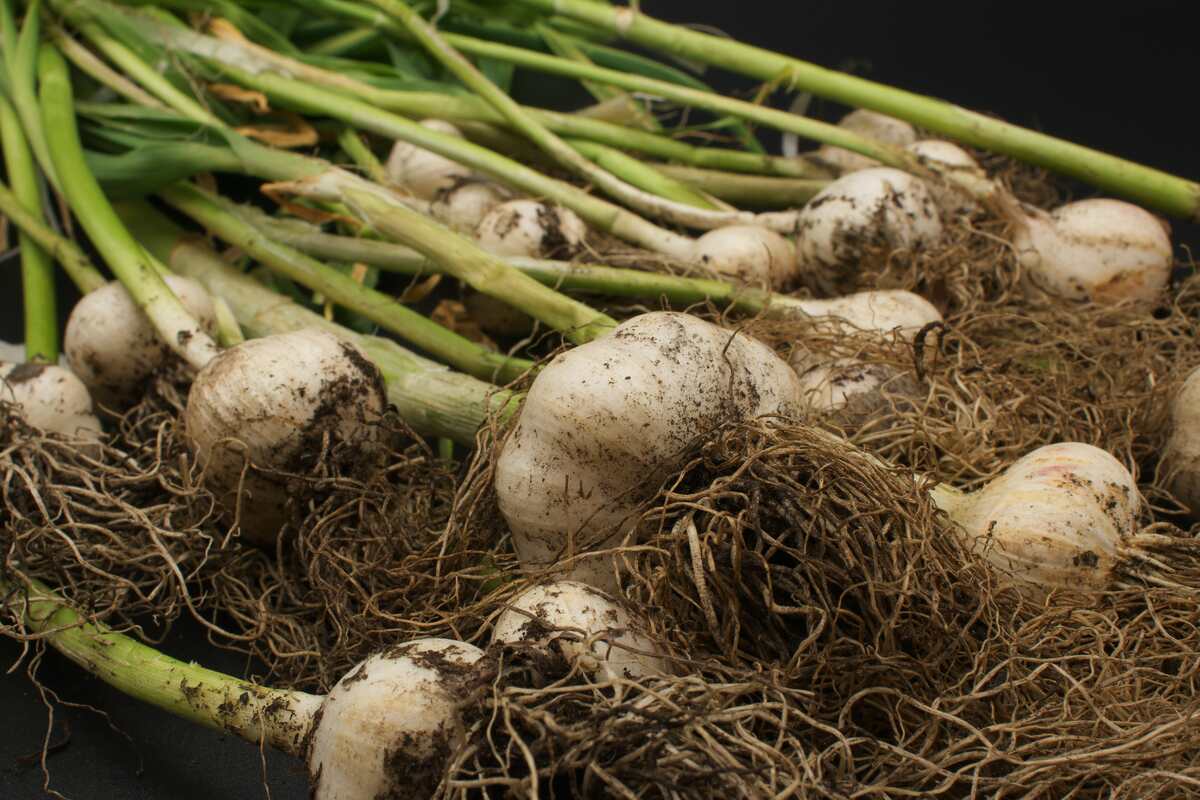
If you’re feeling inspired, you might want to try your hand at making garlic braids. It’s a beautiful, classic way to cure and store your garlic and makes a wonderful homestead-style gift for our city friends or other homesteaders!
Check out this excellent tutorial for making garlic braids. He goes over each step of the braid in a way that you can follow right along.
Can you grow garlic from the grocery store?
Yes, but you shouldn’t.
While it might be possible to plant garlic cloves you buy at the grocery store, you will most likely end up disappointed after all that waiting.
This is because a lot of garlic from the grocery store is imported from China or California and has been sprayed with who-knows-what to prevent it from sprouting. That kind of defeats the purpose already. Also, a lot of the garlic you buy has been stored in warehouses for up to a year beforehand and would therefore have a low chance of success if it could sprout in the first place.
Another factor to consider is that even if the garlic isn’t a sterile hybrid or GMO variety, it might not be adapted for your local climate. A lot of grocery store garlic is of the softneck variety, which is not a cold hardy variety. If you’re in Zone 6 or colder, it might not be able to survive over winter.
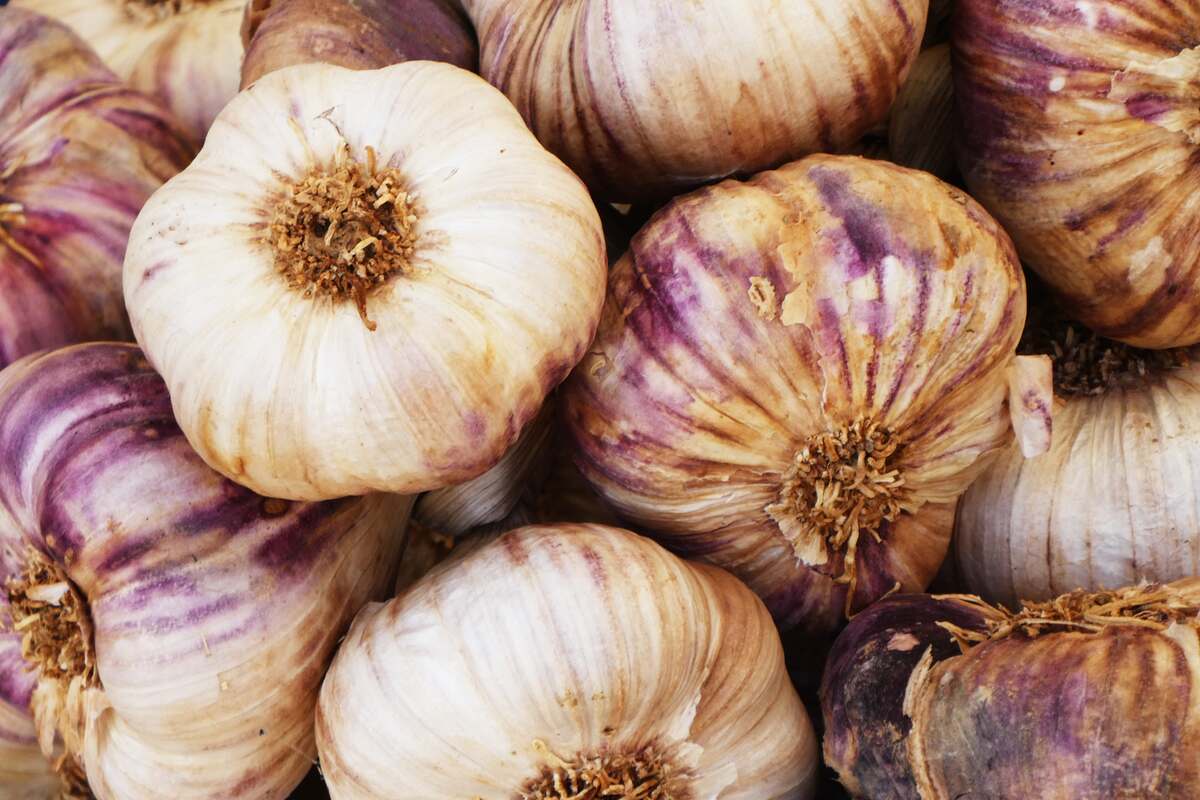
It’s best to buy certified organic seed garlic (note: these are garlic bulbs meant to be planted – not actual seeds!), which is usually readily available at grocery stores anyway, or you can order it online. You can even buy some garlic from a local market and plant some of those! Once you get your hands on some good garlic varieties, you can save some for eating and plant some for next year, and after a few years, you’ll have so much garlic you won’t know what to do with it! For those who really love garlic, you’d probably say that it isn’t possible to have too much garlic.. right?
Final Thoughts on Planting Garlic in the Fall
Planting and growing garlic is super easy and the results are very satisfying. If you put in the work getting your garlic planted in the fall, you’ll be able to enjoy a great crop of fresh garlic next year, and you can keep the cycle going forever! Seriously, fresh homegrown garlic is so much better than store bought! It’s crispy and juicy and so full of flavor. Just make sure you don’t get too close to other people for a while after eating it (unless you secretly suspect they are a vampire).
Do you grow garlic in your garden at home? What tips would you add? Let me know in the comments below! And if you decide to grow some garlic this year, be sure to let me know how it goes.
Happy growing – and remember to brush your teeth!

